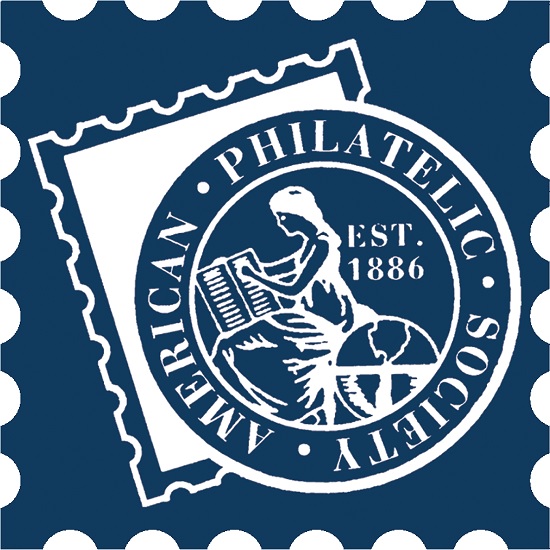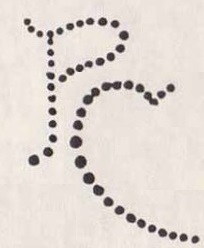Riverside Stamps

Return to Home Page or Altered and Faked stamps Index Page
|
The contents of
this website is copyright protected. Any suggestions for additions or changes are always welcome. |
So, you think it's a Scott #10?
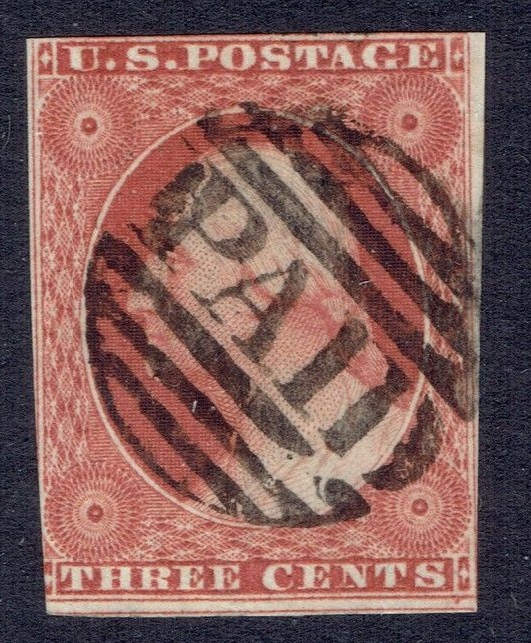
Fig. 1
Scott #10 is a fairly rare stamp which was printed between July and December of 1851. There is one case where Scott #11 was printed in 1851 on one plate (1L) in the months of November and December. There are a large number of Ebay listings of singles and covers that claim to be Scott #10 but in reality are Scott #11. If you know what to look for it is relatively easy to weed out the mis-identified Scott #11's and zero in on the true Scott #10's whether they are on cover or not. What I want to do in this paper is outline the key features to look for that will definitely identify a Scott #10 or at the very least give one comfort that the chances are very good it is really a Scott #10.
The best way to identify a stamp as Scott #10 or not is if the stamp has been plated. First I'll present a little information on how the stamps were printed which will lead to a better understanding of what plating means. Scott #10 and #11 were printed on sheets that contained 200 individual subjects that were separated into two panes of 100 individual stamps in a 10X10 grid, see Fig. 2.
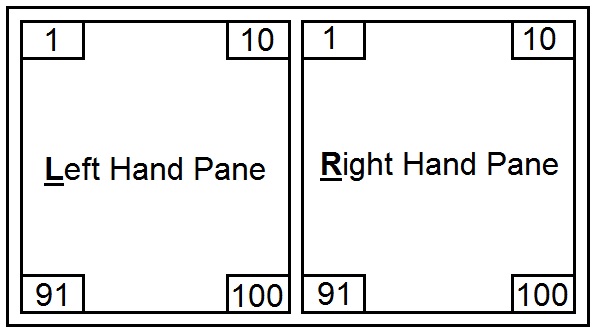
Fig. 2
In the early part of the 20th century a noted Philatelist by the name of Dr.Carroll Chase determined that the exact position where a Scott #10 or #11 was on a sheet could be figured out by looking at the unique features present on the design of the stamp. Dr. Chase continued this study until his death in 1960. During this time Dr. Chase and others who took up the study developed a short hand code that was usually written on the back of a stamp in pencil that identifies the position of the stamp on a pane, which pane it came from as well as which plate was used to print the sheet. An example of that shorthand is - 88L2e - which is read as position 88 in the left hand pane printed from plate 2e.
Only nine plates were used to print Scott #10 and #11 with three of the plates being reconditioned at least once to repair the plates. the complete list of plates are as follows: 0, 1e, 1i, 1L, 2e, 2L, 3, 4, 5e, 5L, 6, 7, and 8. The "e" stands for the early state of the plate, the "i" stands for the intermediate state of the plate and the "L" means it is a late state of the plate. Scott #10 was printed from the following plates: 0, 1e, 1i, 2e, and 5e while Scott #11 was printed on plates 1L, 2L, 3, 4, 5L, 6, 7, and 8. What this means is that any off cover stamp or stamp on cover that has a plating identification of 0, 1e, 1i, 2e, and 5e is definitely a Scott #10. below are two examples of plating identifications, Fig. 3 is the back of Fig. 1 and Fig. 4 is from the lower left corner of a folded letter with a pair of stamps.

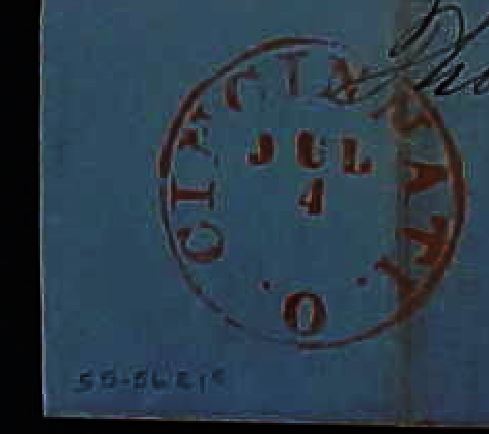
Fig. 3
Fig. 4
Fig. 4 is a little difficult to read but I believe it says "55 - 56L1e". The plating numbers on both Fig. 3 and Fig. 4 conclusively show that they are both Scott #10
Another way of deducing if a suspect Scott #10 on covers, folded letter and piece is really a Scott #10 is by any date that may have been written on the article at the time it passed through the mails. As mentioned at the start of this paper Scott #10 was only printed during July and October of 1851 but there were Scott #10s printed in November and December of 1851 on plates 0, 2e and 5e. If a stamp on cover or folded letter dated October or November of 1851 has been plated to any one of the three mentioned plates then it truly is a Scott #10 but if the stamp has been plated to plate 1L then it can only be a Scott #11. Below are a couple of examples of dated covers to show what I mean. The first cover (Fig. 5) is dated September of 1851 on the back side as a receiver mark by the recipient of the letter - this definitely makes the stamp a Scott #10. The second letter (Fig. 6) was listed as a Scott # 10 but has a date of 1857 - month unknown - this definitely makes the stamp a Scott #11.
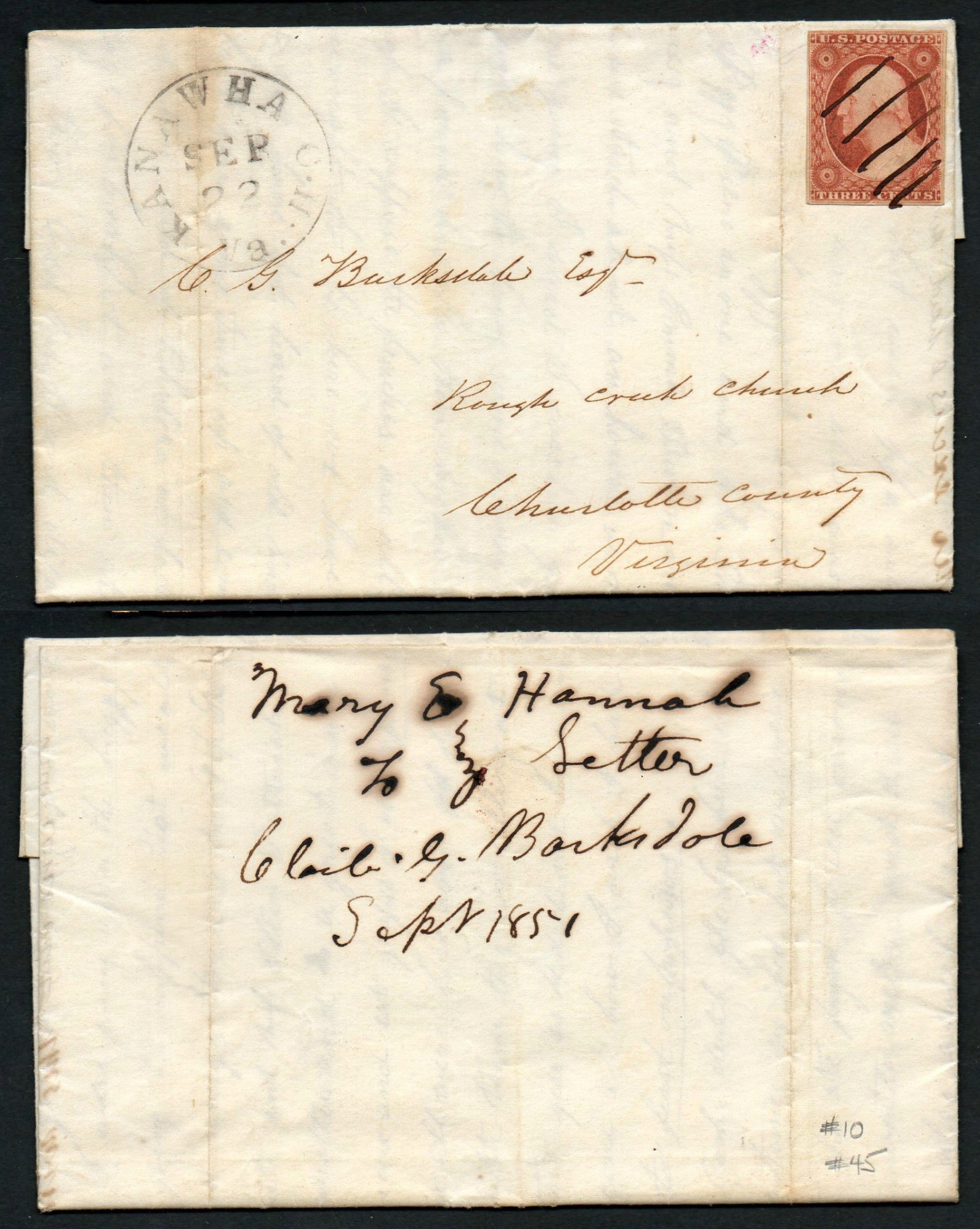
Fig. 5
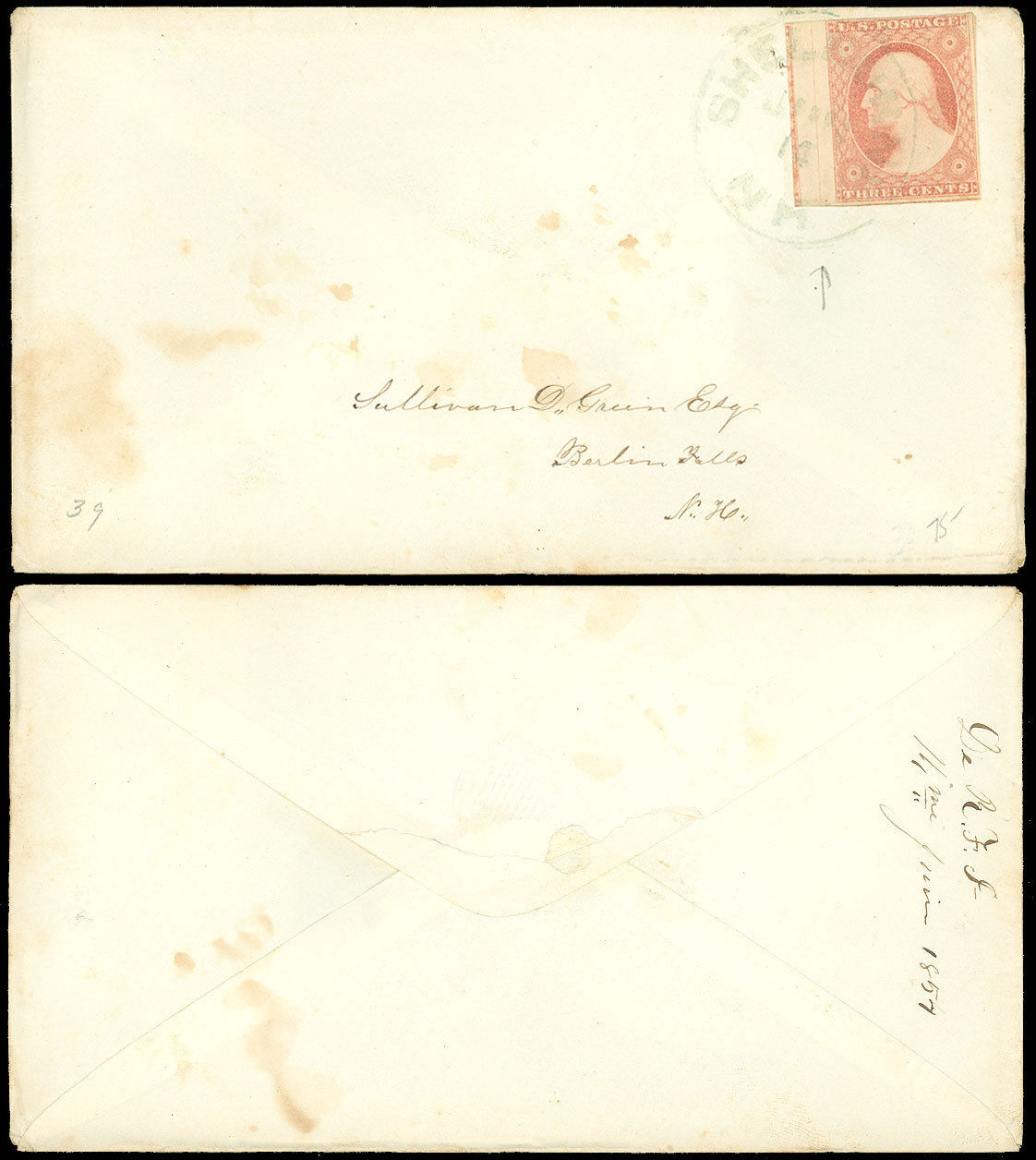
Fig. 6
Checking for a date and plating information will positively identify a stamp as being a Scott #10 or #11 but lacking either of these there are still a couple of characteristics to look for that will give you confidence that a stamp may be a Scott #10 or most likely a Scott #11. There is one specific cancel that can be used to determine the possibility that a stamp is a Scott #10 or not and that is the Boston "PAID" grid cancel. the Boston "PAID" grid cancel comes in two flavors one has a small diameter of 18mm, as seen in Fig. 1, that was used up to January 15 of 1852 and a larger 23mm diameter version that was used from January 16 1852 and onward. It is possible that some Scott #10's can have the large diameter Boston "PAID" grid cancel as well as some Scott #11's could have the small diameter Boston "PAID" grid cancel but the vast majority of stamps with the small diameter Boston "PAID" grid cancel will be Scott #10.
Another thing to remember is that Scott #10s were printed on newer plates with superior inks that resulted in sharp, detailed impressions whereas Scott #11s were printed on plates of inferior quality as well as poor inks that resulted in dull images lacking in detail. Fig. 7 shows a Scott #11 (on left) and a Scott #10 (on right) in a side by side comparison. Note the lack of detail in the hair, the toga and the background cross hatch.
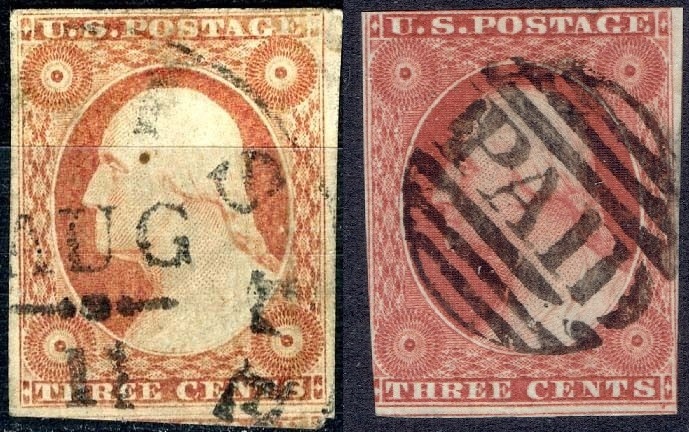
Fig. 7
Color is probably the one thing I would not use to make a determination if a listed stamp is a #10 or not. It's one thing to have the suspect stamp in front of you with a good color reference to compare against but to rely on a photograph on the web or worse yet taking the word of the lister what the color is madness and should not even be considered..
In conclusion what I've done is outlined a couple of things to look for that will positively identify a stamp as a Scott #10 as well as a couple of things to look for that in most cases the possibility is very good that a stamp is a Scott #10. This is by no means a complete compilation of information on the Scott #10, there are a number of other websites that provide a much more in-depth look at this iconic early U.S. stamp.
Here's a lisHere's a list of the sites I've seen:
- The Swedish Tiger has an excellent site also showing NY auction and Ebay results.
- The U.S. Philatelic Classics Society.
- Rosen Stamps has a very nicely don article on the Scott #10.
- Shaulis Stamps has a small writeup with no images.
- MJS Philatelics (Ebay guide).
- V. F. Thomas Co. (small part of a larger write up on all 3c U.S. stamps up to #802.
- http://www.stamps4collectors.com/3c1851/10info.htm - the two web links near the bottom of the article are both broken.
- J. P. Cohen - has a downloadable book of outstanding quality and information content, I highly recommend reading this book.
As always comments and suggestions are always welcome.
To Contact Riverside Stamps:
Email:
Mike Girard - Owner / Operator / Web Master:
g1rardmn1099@comcast.net
|
I am a member of the American Philatelic Society
|
I am a member of the United States Stamp Society  USSS #: 16733 Visit the United States Stamp Society Website at www.usstamps.org |
I am a member of the Perfins Club
|
